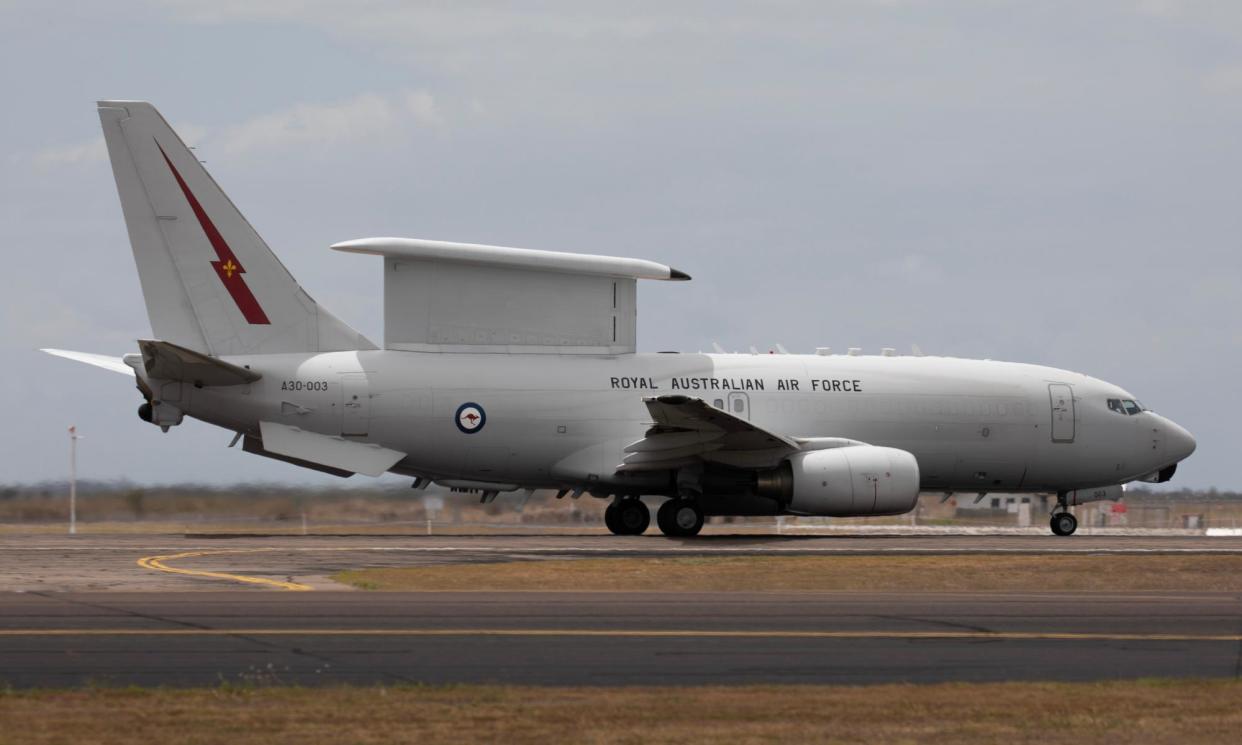Australia will bring home surveillance aircraft supporting Ukraine within weeks

Australia is set to bring home a surveillance aircraft that has helped to protect the delivery of military and humanitarian supplies to Ukraine, but denies it is part of any broader scaling back of support for the country.
The Royal Australian Air Force E-7A Wedgetail – which has conducted regular flying missions to monitor threats since its deployment to Germany in October – is likely to end its current role within weeks.
The Wedgetail, based on the Boeing 737-700, features a long-range surveillance radar and is equipped to simultaneously track airborne and maritime targets, according to the RAAF.
The original deployment was in response to a US request.
It is understood the US has not requested an extension of the deployment beyond its April deadline, and there will not be a gap in western monitoring as a result of Australia ending the mission.
A Defence spokesperson said the Wedgetail had helped protect the international flow of assistance into Ukraine “by providing early warning in the unlikely event of an act or threat from Russia, outside of Ukraine, against the gateway of humanitarian and military assistance”.
Asked whether Australia would extend the deployment, the spokesperson said “any future requests for support” from Australia’s international partners would be “considered in the usual way”.
Ukraine has sunk a number of ships in Russia’s powerful Black Sea fleet over the past two years, but the Australian Wedgetail was not providing information to enable such attacks, the spokesperson said.
“The E-7A Wedgetail operates outside of Russian, Belarusian and Ukrainian airspace. It is not providing surveillance assistance to Ukraine.”
The Defence spokesperson emphasised that Australian troops continued to help train Ukrainian armed forces personnel in the UK.
The situation in Ukraine, more than two years after Russia’s invasion, is likely to be on the agenda when British ministers visit Australia for talks this week.
Related: How will the Ukraine war end? Only when Vladimir Putin is toppled | Simon Tisdall
The UK’s foreign secretary, David Cameron, and the defence secretary, Grant Shapps, will hold the annual meeting with their counterparts, Penny Wong and Richard Marles, in Adelaide on Friday.
Marles said it was “an increasingly complex strategic environment” and he looked forward to “working with our United Kingdom counterparts this week to progress ambitious new initiatives to deepen our defence partnership”.
Wong said Australia and the UK were seeking “a world that is peaceful, stable, prosperous and respectful of sovereignty”.
The Australian government’s position is to help Ukraine end the war “on its terms”.
Last month it announced a further $50m grant to the UK-administered International Fund for Ukraine. This brought Australia’s total overall support to Ukraine to $960m, including $780m in military aid.
However, the Ukrainian government is increasingly anxious about “fatigue” in western support, particularly amid a holdup in the US congress of a $60bn package for Ukraine.
Australia once proclaimed it was “the largest non-NATO contributor” to Ukraine.
But researchers working on the Kiel Institute’s Ukraine Support Tracker told the ABC last week that Australia had since slipped to be the fifth largest non-Nato contributor after Japan, Switzerland, South Korea and Austria.
The Defence spokesperson said Australia continued to stand with its partners in offering support for Ukraine.


